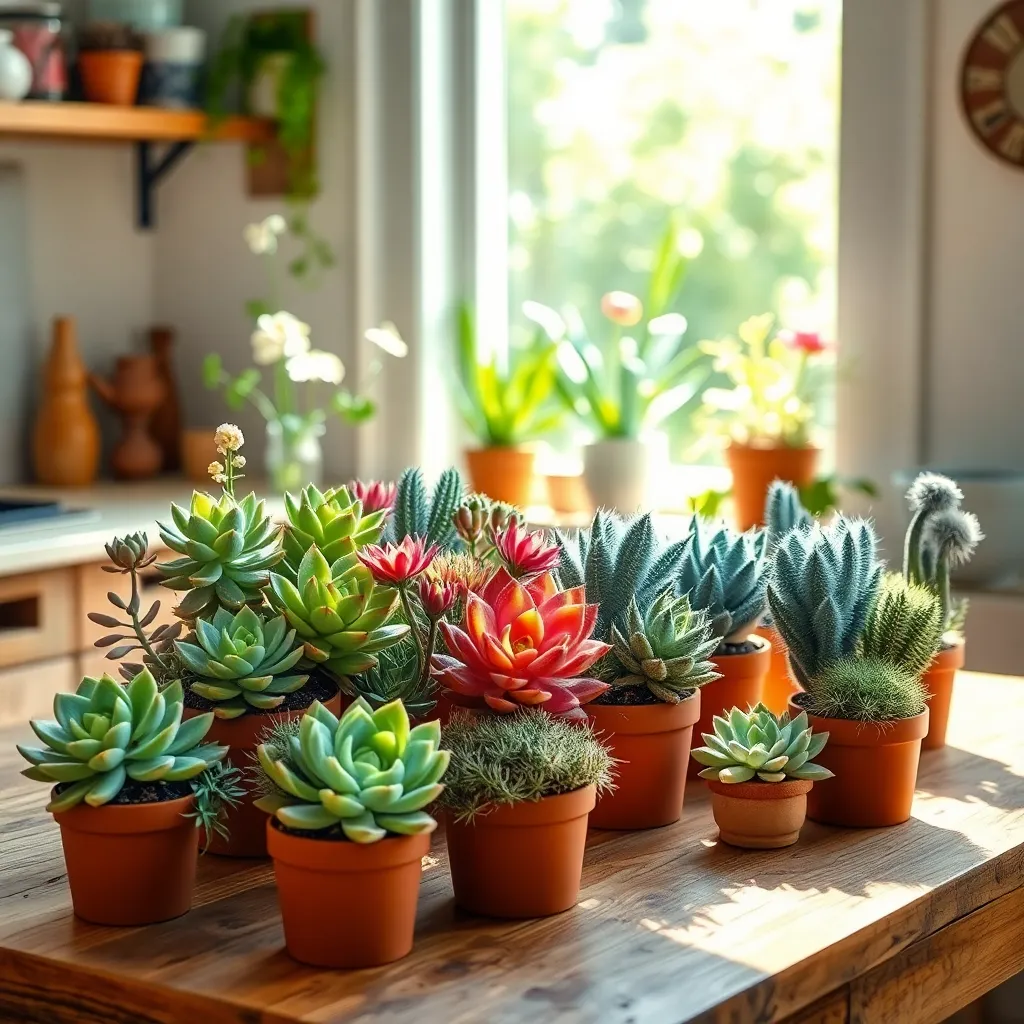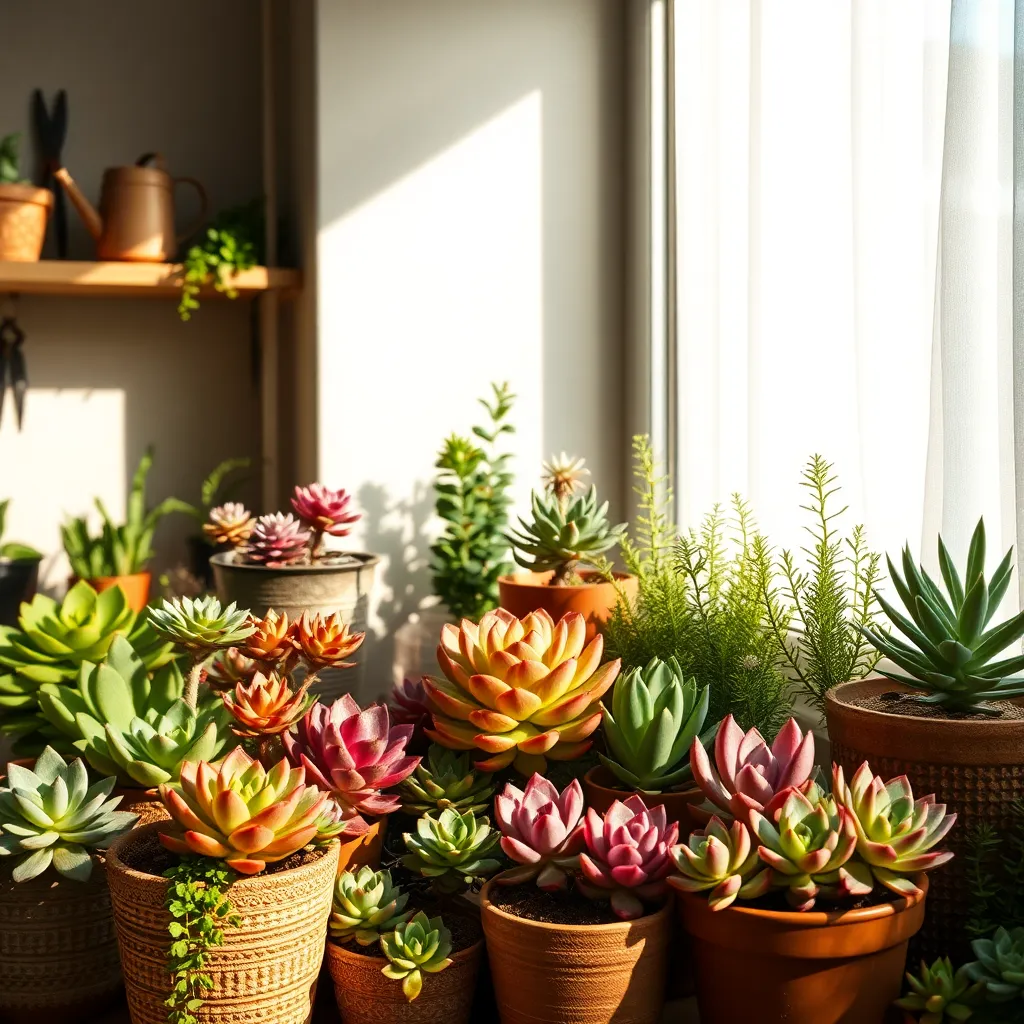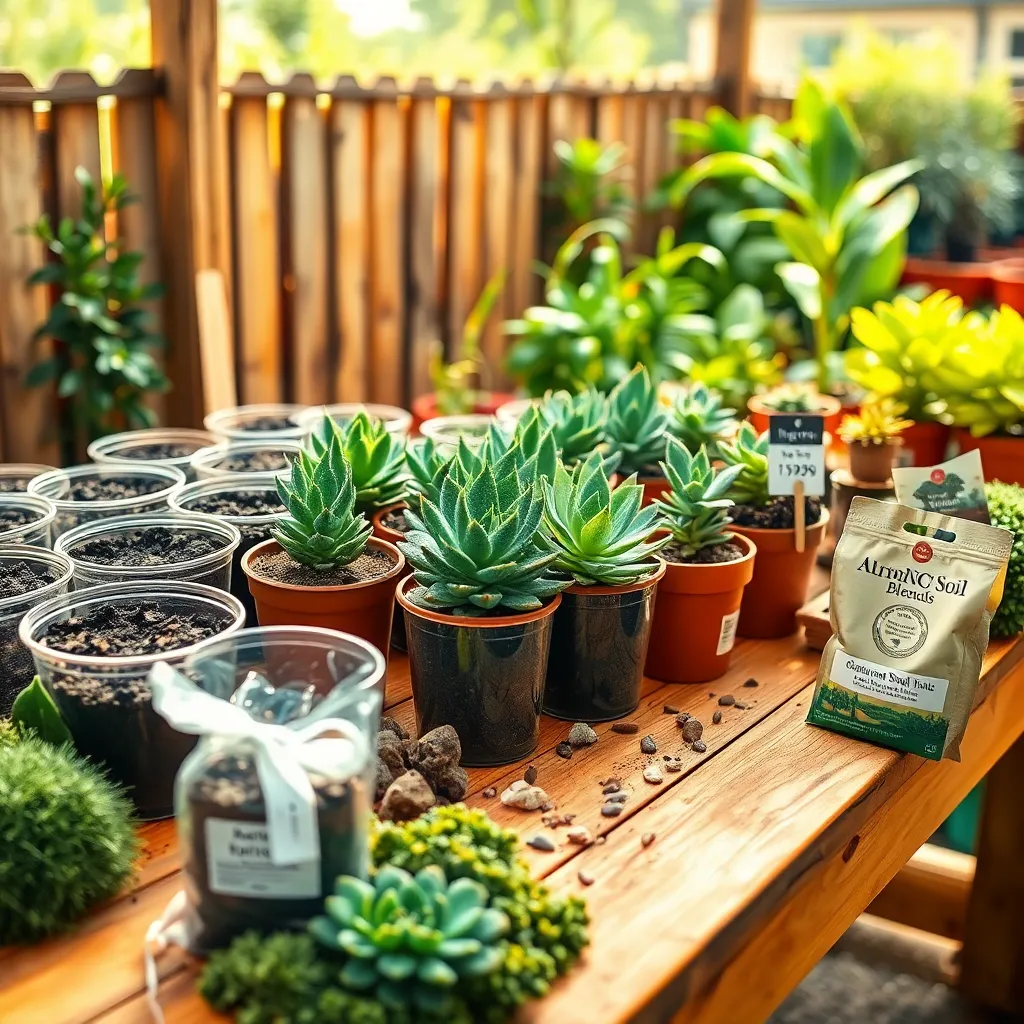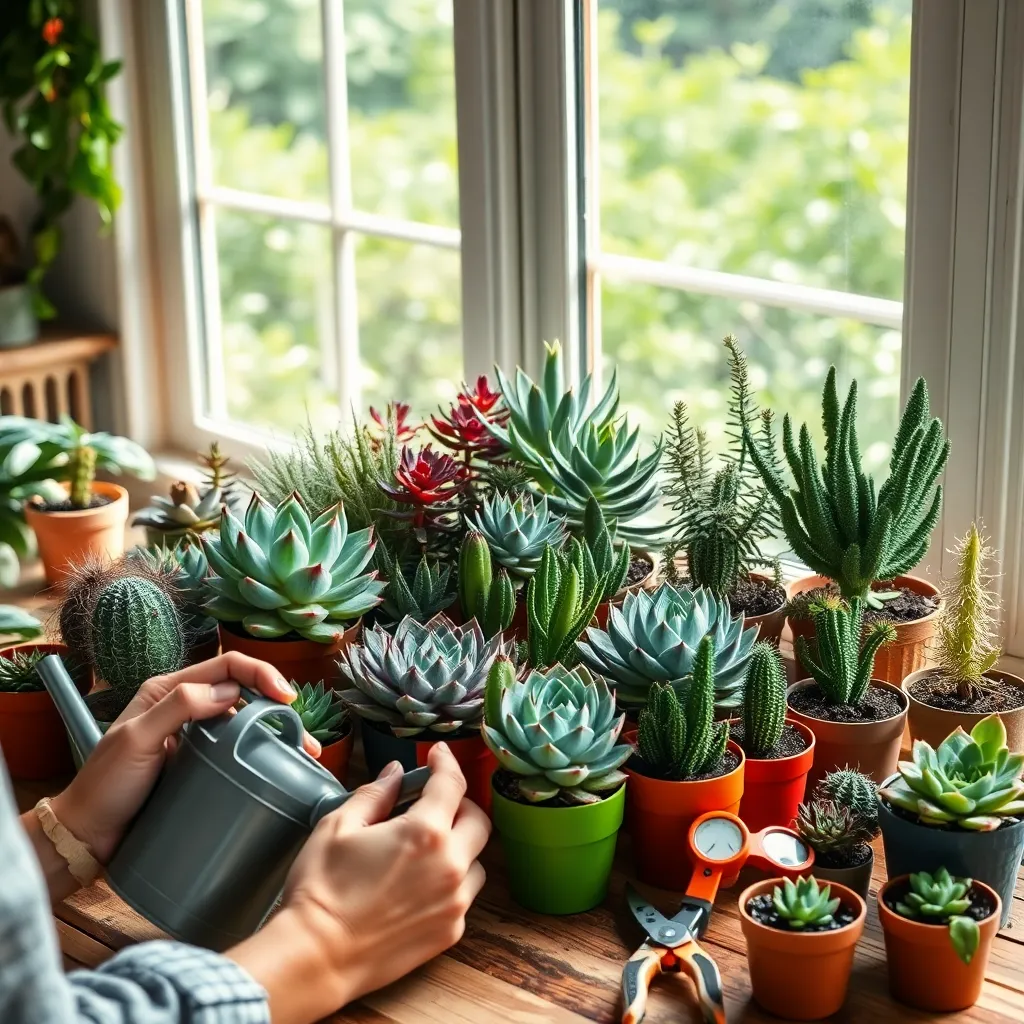Gardening offers a unique blend of tranquility and creativity, and few plants embody this as effortlessly as succulents. For both the novice gardener dipping their toes into the world of plants and the seasoned green thumb looking to expand their collection, succulents present a wonderful opportunity to nurture beauty with minimal fuss. These resilient plants thrive with little more than occasional watering and sunlight, making them the perfect companions for those who may not yet feel confident in their gardening skills.
In this article, we will explore a selection of easy-to-grow succulents that are perfect for beginners, while also offering fresh insights for those more experienced. You’ll discover which varieties will fit seamlessly into your lifestyle, learn the best practices for keeping them healthy, and uncover tips on how to display them to enhance your home’s aesthetic. Whether you’re seeking to brighten a windowsill or transform a corner of your garden, these succulents will provide both a rewarding challenge and a delightful sense of accomplishment. So, let’s embark on this journey into the fascinating world of succulents, where every leaf tells a story of resilience and beauty.
Choosing Beginner-Friendly Succulents

Succulents are an excellent choice for beginners due to their hardy nature and low maintenance requirements. They thrive in bright, indirect light and require well-draining soil, making them perfect for sunny windowsills or outdoor patios.
When selecting beginner-friendly succulents, consider the Jade Plant (Crassula ovata), known for its resilience and attractive, fleshy leaves. This plant requires minimal watering, typically every two to three weeks, and prefers a gritty, cactus potting mix to prevent root rot.
Another great option is the Aloe Vera, which is not only easy to care for but also offers medicinal benefits. Aloe Vera thrives in dry conditions, so ensure the soil dries out completely between waterings, and provide it with bright light to encourage healthy growth.
The Haworthia is a versatile succulent that’s perfect for beginners, as it can tolerate a range of lighting conditions and infrequent watering. Plant it in a container with drainage holes and a mix of sand, perlite, and potting soil to ensure proper aeration and drainage.
To get the best results with succulents, remember to avoid overwatering, which is a common mistake among beginners. Follow these simple tips, and you’ll find that caring for these plants is both rewarding and enjoyable.
Understanding Light Needs for Succulents

Understanding the light needs of succulents is crucial for their healthy growth and development. Most succulents thrive in bright, indirect light, which mimics their natural desert habitat conditions.
Place your succulents near a south or east-facing window where they can receive ample sunlight without being scorched. If natural light is limited, consider using a grow light to supplement their light requirements, ensuring it provides the full spectrum of light for optimal growth.
Be mindful that different succulents have varying light preferences, and some may tolerate low light better than others. Observe your plants closely—if they begin to stretch or lose color, it might be a sign they need more light.
For beginners, starting with succulents like Jade Plant or Aloe Vera, which are more forgiving of lighting variations, can be beneficial. Rotate your succulents periodically to ensure they receive even light exposure, preventing uneven growth.
Soil Mixes That Promote Growth

Soil quality is crucial for the healthy growth of your succulents. To create the ideal soil mix, use a combination of cactus potting mix and coarse sand for optimal drainage.
Consider adding perlite or pumice to your mix to further enhance aeration. These materials help prevent root rot by allowing water to drain quickly and keeping the soil from becoming compacted.
It’s important to avoid using regular garden soil for your succulents. Regular soil retains too much moisture, which can lead to root rot and other issues.
For advanced gardeners, experimenting with different soil amendments can yield even better results. For instance, incorporating crushed granite or turface can improve the mineral content and drainage of your soil, offering succulents the perfect balance of moisture and nutrients.
Proper Watering Techniques Explained

Watering succulents properly is crucial for their health and growth. These plants, known for their water-storing leaves, require a different approach compared to traditional houseplants.
To avoid overwatering, always check that the soil is completely dry before watering again. Use a moisture meter or simply insert your finger an inch into the soil; it should feel dry before you add more water.
Watering technique matters greatly; it’s best to water deeply and infrequently. This encourages the roots to grow deep into the soil, increasing the plant’s stability and drought resistance.
If your succulents are in containers, ensure they have drainage holes to prevent water from pooling at the bottom. Standing water can lead to root rot, a common issue with succulents if not watered correctly.
For those growing succulents outdoors, nature often takes care of their watering needs. However, during extended dry spells, a supplemental deep watering every couple of weeks can keep your succulents thriving.
In winter, most succulents enter a dormant phase and require significantly less water. Reduce your watering frequency during this period to prevent any health issues as the plant rests.
Preventing Common Succulent Issues

Succulents are generally easy to care for, but they can still face common issues if not properly maintained. One of the most prevalent problems is root rot, which often results from overwatering. To prevent this, ensure your succulents are planted in a well-draining soil mix, such as one made specifically for cacti and succulents. Water your succulents only when the soil is completely dry, which typically means once every two to three weeks, depending on your home’s humidity and temperature.
Pests can also pose a threat to your succulent collection, although they are less common than other houseplants. Watch out for mealybugs and spider mites, which can be deterred by maintaining good airflow around your plants. Regularly inspect your succulents for signs of pest infestations, and if you notice any, treat them promptly with a gentle insecticidal soap or neem oil solution. This proactive approach will help keep your succulents healthy and thriving.
Another issue to be aware of is sunburn, which can occur if your succulents receive too much direct sunlight. Many succulents thrive with a few hours of bright, indirect light each day, so consider placing them near a window that provides filtered sunlight. If your succulents start to show signs of discoloration or burning, move them to a spot with less intense light and monitor their recovery. Adjusting their location can help prevent this common problem and keep your plants looking vibrant.
For a more advanced tip, consider rotating your succulents regularly to ensure even growth and exposure to light. This simple practice helps avoid leggy growth and keeps your plants symmetrical and attractive. Regularly dust off the leaves with a soft brush or cloth to keep them clean and free from debris, which can also aid in preventing pest issues. By incorporating these techniques, you’ll foster a thriving environment for your succulents to flourish.
Conclusion: Growing Success with These Plants
In exploring the world of succulents, we’ve uncovered five key concepts that mirror the nurturing of successful relationships: patience, understanding individual needs, providing the right environment, consistent care, and celebrating growth. Just as succulents thrive under the right conditions, relationships flourish with dedicated attention and understanding. Now, it’s time to put this knowledge into action. Take a moment today to assess the “sunlight” and “soil” your relationships are receiving—are you providing the right support and nourishment for them to thrive?
To keep these insights at your fingertips, bookmark this article. It will serve as a handy guide to remind you of the simple yet profound ways you can cultivate stronger, healthier connections with those around you. As you continue this journey of growth, remember that every small effort you make today plants the seeds for a flourishing relationship tomorrow. Embrace the potential for success, and watch as your relationships transform, just like the vibrant succulents in your care. Save this article as a cornerstone of your relationship garden, and let it inspire continuous growth and joy.

